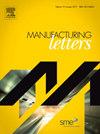汽车白车身在烤漆过程中的变形预测
IF 1.9
Q3 ENGINEERING, MANUFACTURING
引用次数: 0
摘要
薄壳结构的热诱导变形预测是一项具有挑战性的任务。它通常涉及高度非线性屈曲行为,其中临界屈曲温度和屈曲后变形不仅对结构刚度和边界条件非常敏感,而且对输入部件的微小几何缺陷(又称 "表面质量")也非常敏感。本研究开发了新型计算机辅助工程(CAE)方法,用于预测汽车白车身(BIW)面板在涂装车间烘烤过程中的热变形。CAE 方法包括三套有限元分析(FEA)程序,即热褶皱模式分析、热结构分析和缺陷分析。两项车辆级案例研究表明,模拟成功地预测了车身侧外侧(BSO)顶盖等面板的热诱导变形。得出的结论是,变形主要取决于烘箱烘烤过程中车身侧外板与车身侧外板其余部分之间的温差,而不是温度本身。研究还发现,车身面板成型质量(如残余应力和厚度减薄)和装配尺寸质量也会影响变形。本文章由计算机程序翻译,如有差异,请以英文原文为准。
Prediction of automotive body-in-white distortion in paint baking process
Thermal-induced distortion prediction of thin shell structures is a challenging task. It often involves highly nonlinear buckling behaviour, where the critical buckling temperature and post-buckling deformations are very sensitive not only to structural stiffness and boundary conditions but also minute geometric imperfections (a.k.a., “surface quality”) of the incoming parts. In the present work, novel Computer Aided Engineering (CAE) methods were developed to predict the thermal-induced distortion of automotive Body-in-White (BIW) panels during paint shop oven-baking processes. The CAE methodology consist of a set of three Finite Element Analysis (FEA) procedures, i.e., thermal-buckling mode analysis, thermo-structural analysis, and imperfection analysis. Two vehicle level case studies showed that simulations successfully predicted the thermal-induced distortion for panels such as the Body Side Outer (BSO) header. It was concluded that the distortion depends primarily on the temperature difference between the BSO and the rest of the BIW during the oven-baking process, rather than the temperatures themselves. Body panel forming quality (e.g., residual stresses and thickness thinning) and assembly dimensional quality were also found to impact the distortions.
求助全文
通过发布文献求助,成功后即可免费获取论文全文。
去求助
来源期刊

Manufacturing Letters
Engineering-Industrial and Manufacturing Engineering
CiteScore
4.20
自引率
5.10%
发文量
192
审稿时长
60 days
 求助内容:
求助内容: 应助结果提醒方式:
应助结果提醒方式:


